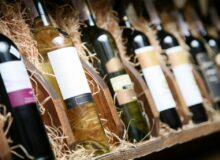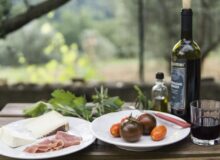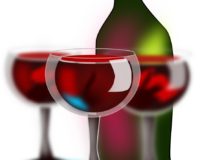The Story of BBQ is debated but a lot of fun!
Spanish immigration to Cuba began in 1492, when Christopher Columbus first landed on the island, and continues to the present day. The first sighting of a Spanish boat approaching the island was on 27 or 28 October 1492, Bariay; probably the landfall place of Columbus in Cuba, on the eastern point of the island.
Columbus, on his first voyage to the Americas, sailed south from what is now the Bahamas to explore the northeast coast of Cuba and the northern coast of Hispaniola(Haiti, Dominican Republic) and Puerto Rico. Which is arguably where Barbeque originates and thus brought to North Florida by the Spaniards a little later.
Barbeque meat can come from a grill, oven, a crock pot, but is normally thought of as resulting from a smoker, pit, or open fire, where charcoal and wood are the primary fuelsin BBQ ; At home and in competitions, meats usually used are Pork Ribs, Boston Butt, Beef Brisket and Chicken and there are all kinds of techniques.
The Kansas City Barbeque Society (KCBS) is a standard of BBQ in the U.S. and it certifies BBQ Judges (CBJ); it which carries a lot of information with it
By the way, did you know that today the French are coming the U.S. to learn about approving cuts of meat and Japan is working on the language barriers to generate their own BBQ programs as well…These are Interesting times
Here are some of the basic information and storytelling…
BBQ is about the meat not the garnishes or the sauce. It’s about the appearance, taste and texture of the meat. Meat is pork, beef and brisket and chicken (in most states, some think Chicken is the North’s doing… having pulled chicken at cookouts not for ‘real’ BBQ). Some get testy with Texas. Don’t mess with Texas!
A key difference to know is that is BBQ is low and slow and grilling is quick and hot.
…the process where fats and tough connective tissues in a meat are gradually broken down during the long, slow cooking is called “rendering” and is a key component in BBQ.
The joke is that Yankees up North feel that BBQ means a cookout and a day out to cook or they think BBQ is the actual grill or that BBQ is an action (verb).
Another joke is…Is Florida really a BBQ southern state? But the there is some serious Irony there…(Irony is the Spanish are thought to come to Florida with the BBQ technology, go figure)
…So essentially, BBQ is a meat prepared in a very special way.
Oh! … one more thing that’s probably the single most important part of cooking good BBQ meat and if you are dead-on… you are on your way to barbecuing magnificence! It’s control the temperature; so start looking for those gauges and thermometers!
Here are some quick BBQ ‘Tidbits’ on States:
Texas – Home of the Longhorn Steer, Smoking their Brisket (slab of beef) the coating is called bark
Tennessee – Loves their smoky sauce; serves a sweet tomato sauce flavored with pepper and molasses
Memphis – Is all about their dry rub; also “pulled” rather than chopped. Pulled pork is slow-cooked, shredded by hand; alongside coleslaw, cornbread, and sometimes French fries; ribs are either basted with sauce or rubbed with a mixture of tangy spices before pit cooking
Georgia – is caught between sweet or spicy
South Carolina – BBQ is a yellow sauce and it’s because it is a mustard sauce; the pig is still chopped or sliced; they also like Hash which is made of stewed organ meats and skin of the pig is often removed and fried separately
Mississippi – the BBQ is totally vinegary and Pork shoulder is cut of choice
North Carolina –also a peppery vinegar base BBQ; the meat is chopped or sliced pig; side dishes include coleslaw and hush puppies
Louisiana – Home of the Cajuns they like their BBQ spicy and very spicy
Kentucky likes mutton which is sheep. Most of the state enjoys sliced pork butt
Arkansas is similar to Georgia. It is a melting pot of BBQ and sometimes they can make it very spicy; side dishes can include baked beans, coleslaw, and potato chips
Alabama is different in that they use white BBQ sauce that uses mayo; but most sauces are also red, but a bit spicier than those served in Tennessee
***Here are a few of the KCBS rules to go by:
At sanctioned KCBS BBQ competitions; if two pieces are stuck together you are disqualified, sauce on the side also disqualified, electronic appliances (Microwave) disqualified too. If bone is hot it is a sign of microwave. Look for toothpicks and foil to disqualify; removing membrane is a choice. But not necessary. Sculpting the meat is not acceptable. Hollywood cut is acceptable though (all meat to one side of bone); six (minimum) pieces per tray, six judges and six tables. 180 is the perfect score. There is a table captain that presents the meat for Blind Judging for Appearance, Taste and Tenderness and there are officials that oversee this process.
One thing I say…is bring on the wine…but that’s not part of the judging…yet! 🙂







